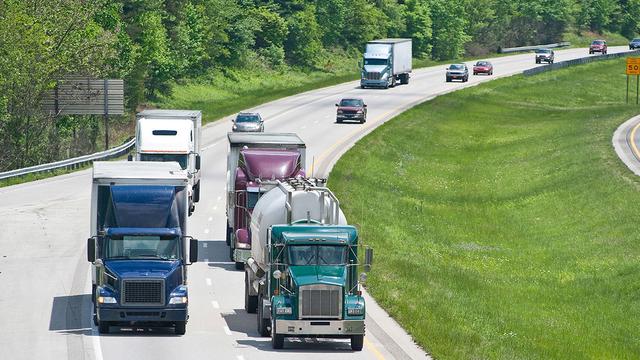As more vehicles switch from gas-fueled to electric and revenues from the gas tax continue to decline, experts in the transportation industry are looking for alternative ways to fund road and bridge construction and maintenance. Distance-based user fees (DBUFs) have been gaining political traction as a possibility.
Researchers, state transportation leaders, and policy leaders discussed next steps for DBUFs during a “Rethinking Transportation Finance Roundtable” held in June. The event was the third in a series of roundtables offered as part of research by the Humphrey School of Public Affairs, funded by the Minnesota Department of Transportation (MnDOT).
“Our revenues [are] declining,” said Margaret Anderson Kelliher, MnDOT commissioner, noting that more fuel-efficient vehicles are contributing to the trend. “Our prediction is 1 to 2 percent per year… People are driving more than they ever were, but we are collecting less” in gas tax revenues. Still, she says, the roadway system must be maintained: “We need to find a way to politically come around on the issue: What’s going to replace the gas tax, eventually?”
Testing distance-based fees
DBUFs are one alternative being widely considered across the country. Under this system, vehicle owners would pay a fee based on the number of miles they drive; proponents say it’s better than the gas tax because it charges drivers directly for the miles they travel and the resulting wear and tear on the roads. Revenue from DBUFs also would be more consistent over time.
MnDOT has studied DBUFs as an alternative transportation finance method for decades. Its most recent effort is a pilot demonstration of DBUFs in shared vehicle fleets, such as HOURCAR and Zipcar. It’s the first-ever study focused solely on usage in such fleets. For the pilot, MnDOT partnered with those two service providers, as well as the Humphrey School of Public Affairs and the Minnesota Department of Revenue.
MnDOT’s Chris Berrens, deputy project manager for the pilot, said the use of shared vehicle fleets could allow for a gradual introduction of DBUFs, increasing public comfort with the concept and easing privacy concerns. Shared-vehicle providers already have built-in technology for reporting customers’ mileage, which was found to be an efficient way to collect the fees, he added.
Humphrey School researchers have focused on the equity aspects of DBUFs. A flat fee of a few cents per mile, for example, is similar to the gas tax, said Frank Douma, director of state and local policy and outreach at the School’s Institute for Urban and Regional Infrastructure Finance. Both approaches are relatively simple to administer but have regressive equity effects.
“Those who make less will pay more out of their income to travel the same distance as someone who makes more,” Douma said.
Other equity considerations include the different impacts for rural and urban areas, and whether the fees should be higher or lower depending on the sizes, types, and uses of vehicles.
Somewhat surprisingly, Douma said, research into this issue indicates that DBUFs—if applied as a flat, per-mile fee—would be more cost-efficient than the gas tax for rural residents driving long distances. However, if DBUFs are structured to charge big, fuel-inefficient vehicles for the additional costs they impose on the system, some rural residents could end up paying more.
“The ultimate lesson here is that there is not necessarily going to be one silver bullet,” Douma said. Legislators can structure DBUFs to account for the impacts on different demographics, modes, or geographic areas.
National and state action
Barbara Rohde, a Humphrey School researcher and the executive director of the Mileage-Based User Fee Alliance (MBUFA), has reviewed activities across the nation. Rohde said nearly half the states are involved in the transition to DBUFs in some way. In addition, two federal DBUF bills—one in the House and one in the Senate—have been gaining bipartisan support.
At the state level, Minnesota House Rep. Steve Elkins said an incremental, multi-strategy approach will likely be the most effective way of handling the transition from the gas tax to DBUFs.
“We should be experimenting with MBUF technology now, when there are only about 10,000 electric vehicles in the state,” Elkins said. “Let’s get the kinks out of the system before we start seeing electric vehicles used at scale.”
Elkins has introduced a bill that would replace the current $75 electric vehicle registration surcharge with a DBUF. He says it would yield about the same amount of revenue, per vehicle, as an equivalent gasoline-powered vehicle driven the same number of miles, relying on the same technology already in use in Oregon and Utah.
More information about MnDOT’s DBUF efforts are available on the agency’s website. The final report of the U’s research is planned for publication late this year.
Adapted from a story originally published by the Center for Transportation Studies.



